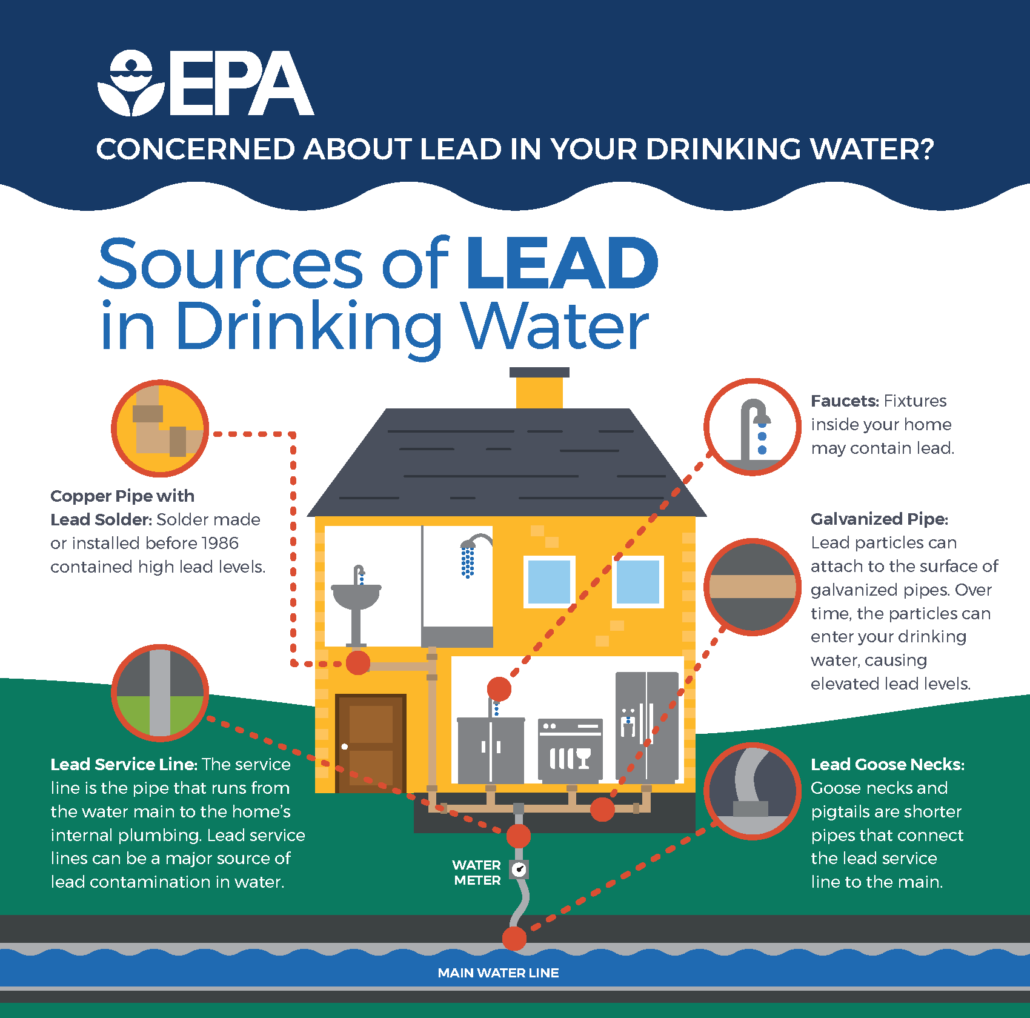Is there lead in my drinking water?
Lead can be harmful to your health, but just how harmful depends on how much lead gets into your body, your health, and where the lead becomes stored in your body. It may be difficult to understand why lead in drinking water is a potential health hazard or even a concern. Most people believe that their water comes from pure sources without any contamination or that the water has been treated, so there is not a problem. This is not the case for lead. The primary source for lead in most drinking is the piping leading to the home or the household pluming.

Lead is a toxic metal that is harmful to human health and there is NO safe level for lead exposure. It has been estimated that up to 20 % of the total lead exposure in children can be attributed to consuming contaminated water. In addition, infants, fetuses, and young children are particularly vulnerable to lead poisoning. This is because they usually consume more water and their bodies are actively developing, which facilitates the bioaccumulation of lead.
The primary route for lead poisoning in drinking water is not contamination of the water by leaded fuels, old batteries or some hazardous waste site, the primary route is the distribution system used to carry water to your home and more importantly the plumbing within your home. In older homes, lead was used to make the piping and/or solder. In homes, built prior to 1930’s water pipes were primarily made from lead. These pipes can be identified because the piping tends to have a dull gray color, can be scratched with a key, and a magnet will not stick to the piping. In buildings built between the 1930’s and early 1980’s, copper pipes were often used, but the solder contained elevated levels of lead. 
Is there radon in my water?
Because radon in indoor air is the larger health concern, most people have the air tested for radon in their new homes. If you have tested the air in your home and found a radon problem, you may also want to find out whether your water is a concern. If you get water from a public water system, find out whether the comes from a surface (river, lake, or reservoir) or a ground water (underground) source. If you have a private well, the EPA recommends testing your water for radon. Part of the radon  levels in your home may come from radon in your well water.
levels in your home may come from radon in your well water.
The EPA and various states have recommended drinking water standards for radon in water ranging from 300 to 10,000 pCi/L but no standard currently exists. Check with your state radon program to determine if there are any guidelines or recommendations for taking action to reduce radon in water concentrations.
The chart below illustrates where radon in our homes comes from.


![]()
![]()



 levels in your home may come from radon in your well water.
levels in your home may come from radon in your well water.